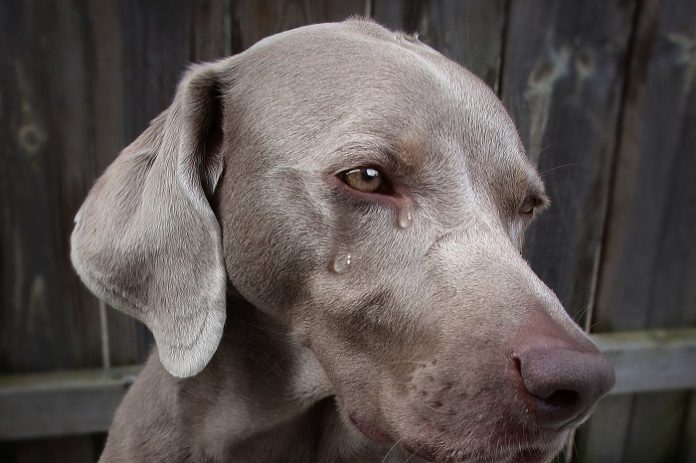Do Dogs Cry? You may assume that your dog is sad when you see his eyes full of tears, but that doesn’t have to mean it. Although dogs seem to have a way of showing their annoyance, they do not cry exactly the way humans do.
Dogs do not cry like humans because, unlike humans, tears in dogs are created to flow into the nose and throat rather than into the eyes. The dog’s body system is not positioned to shed tears when they feel pain. When you see their eyes moist, it can be a sign of eye problems or allergies.
Dogs make certain sounds instead of tears
When a dog wants something, feels anxious, or needs attention, he whimpers and smiles. This dog behavior is the closest thing to crying in humans. Dogs behave the same way when they feel pain, but this usually happens when the pain comes on suddenly. When a dog lives with chronic pain, it generally suffers in silence most of the time.
Why do dogs show anxiety in their voice?
Dogs are more dependent on their hearing than eyesight, so they are more likely to express their agitation by voice than by crying. To date, there is no official confirmation that dogs cry as humans do when they express sadness or anxiety.
Can dogs feel emotions?
Dogs can often display body language that would fit what we call sadness in humans. Dogs can feel depression and anxiety. They can also feel what we might call “love.” Feelings and cognition in dogs have become the subject of a lot of serious research in the last few years. Some studies have found that the pleasure-related (human-like) part of a dog’s brain will be activated in the presence of objects that smell their owner.
What makes dogs cry when they see you?
Dogs cannot speak, voice is the only way they express their own excitement. Of course, they will behave this way even if they last saw you a few hours ago, but the intensity of their arousal will increase as the time you spend apart increases as your relationship with the dog develops.
What does it mean when your dog cries?
If your dog has wet eyes with excessive drainage from one or both eyes, one or both tear ducts may be blocked. However, dogs that have a straight face and big eyes, such as pugs and Pekingese, can naturally narrow more because of their unique head structure. Accordingly, it is important to pay attention to your pet’s eyes and spot the problem as soon as possible.
Common causes of crying in dogs
Conjunctivitis: This is an infection of the tissues that coats the eye and causes irritation, itching, tears, and moisture of the eyes.
Corneal growths and ulcers: An infection or injury to the cornea causes the dog to constantly narrow its eyes. The dog will usually keep the problematic eye closed to protect it.
Distichiasis: The eyelashes grow irregularly, on the inside of the eyelid, and irritate the cornea. This causes the eye to become inflamed.
Glaucoma: This disease causes an increase in eye pressure and can cause blindness if left untreated. Symptoms mean that the eyes constantly tear, yellow discharge from the eyes and enlarged pupils, which do not respond to light.
Why do dogs cry at night?
Many cultures have legends about why dogs cry at night and most are based on the fact that they so alert people to something dark and feel the presence of ghosts, demons, or foresee death. In fact, crying after dark is not uncommon behavior. Crying and howling during the evenings are common for dogs suffering from anxiety and stress. This is also common with puppies if you keep them out of the bedroom. Older dogs suffering from cognitive dysfunction may also cry more at night as their sense of confusion and disorientation increases when darkness falls.
Take some action on the occasion of excessive tears
Just because it doesn’t have to mean that dogs release tears only when they are upset, does not mean that they cannot have human-like feelings. They simply voice their unhappiness. If your dog’s eyes start to narrow often and he/she looks unhappy, see your vet as soon as possible. Your quick action can prevent your eye problem from becoming much more serious.





